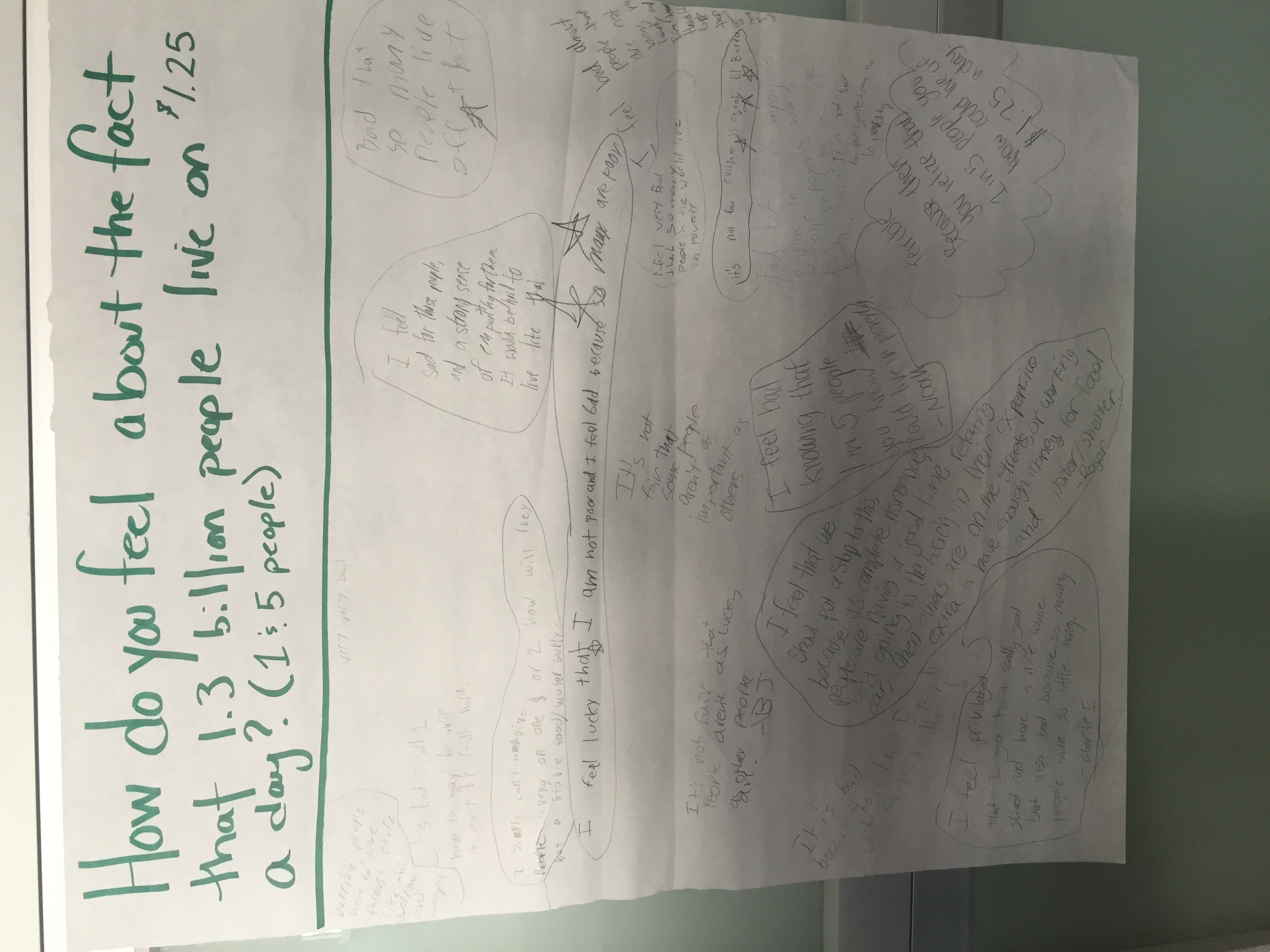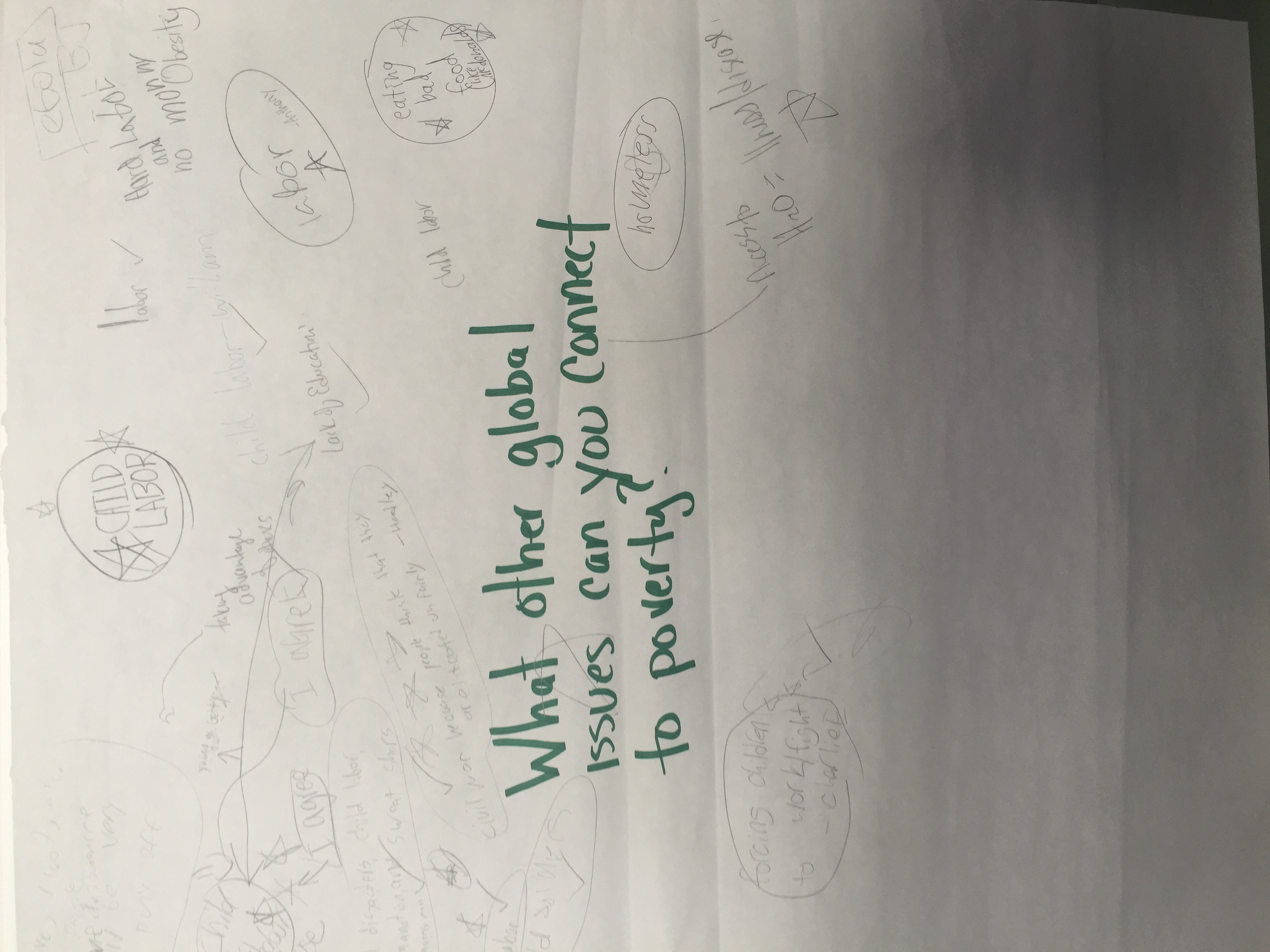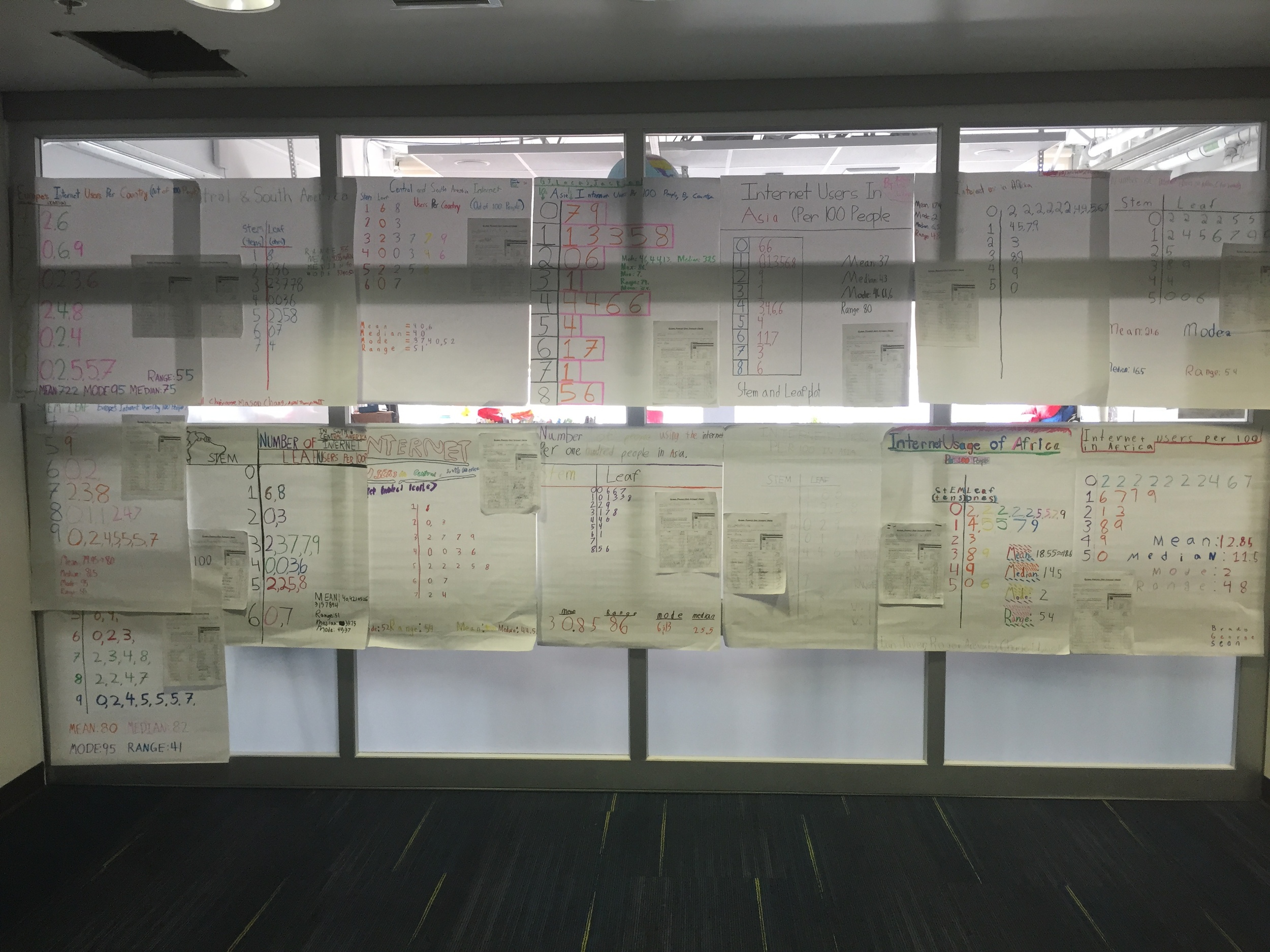The 5th graders have been working on a unit of global poverty for approximately 2 1/2 weeks. Broken up by break, I was worried about the boys losing interest and/or having a hard time bringing them back and getting them involved. However, this was not the case. A lot has come to the surface over the last few weeks as we have broken down into some interesting conversations. We talked about global poverty and it's implications on other issues such as education and healthcare. And while I have found it hard to find the time to write about the project, I was inspired by one of my 5th graders words today and felt compelled to share:
"Don't stop doing this project until the developing world is fully developed." He went on to share that he was having fun making graphs about real life data and sharing that data with others. He then said, "it makes people sympathize". Sympathize? I asked. "Well, I hope it makes them have empathy but that may be hard for some people". I got it! But we certainly won't stop trying.
Interested in using real life data and math to teach your students about the world?
This unit works on data collection and organization and focusses on Stem and Leaf Plots, Bar Graphs, Line Graphs, Circle Graphs, Mean, Median, Mode, and Range.
This is how things went down here in the garage with the whole class of 5th graders and Ms Gomez-Lobo by my side...
Week One Highlights
Boys began the project by investigating the country of which their shirt was made using www.ifitweremyhome.com. The boys were fascinated as they began to discover that most of of the pieces of clothing we wear come from countries where the people make significant less money than we do. This led to conversations about child labor, sweatshops, and import regulations and morals. 5th graders quickly escalated the conversation as they wondered...
- How can we support these countries by ensuring the people are paid more for their work?
- If they need the money, if we stop purchasing won't some people lose their jobs?
- If the US has unemployment, how come we can't create more US based companies in this job sector?
- While this benefits both of us, low cost to us, employment for them, is it morally wrong?
The boys also participated in Global Mall and Take A Step for Equity from www.facingthefuture.org. These activities were taken from their book Engaging Students Through Global Issues. While Take A Step for Equity is an activity where they are randomly placed into an economic status and I read them what life is like, the Global Mall activity challenges the boys to make some hard decisions with their money.
The boys had many thoughts after these activities. Trends included:
- I wonder why so many people know their is a poverty problem and yet don’t act?
- I wonder how we can get people to act?
- I wonder what organizations are best to give our money or time to?
- I believe that education is key to moving up in the world. (The boys were quite obsessed with education equating to a college degree, we had to take some time to step back, look at literacy and access to education across the globe)
Initially the boys started feeling guilty for what they have, but we tried hard to get them to appreciate what they have and be conscious and acknowledge the lives of others. In the coming days the plan is to turn that into empowerment to act! The boys are beginning to see the world from another perspective.
Week Two Highlights
Not sure if the boys would be engaged after a week's vacation, we dove right into week two by working through some real life data world problems. After processing these problems mathematically and contextually, we reviewed the concepts of mean, median, mode, range and stem and leaf plots in anticipation of our end of the week activity. Some student responses about the activity were:
- I feel like not enough is being done to help. Some people are trying to help but some people that could make a bigger difference don't usually because they have "better things to do".
- Not everything in life is to win an election. politicians are supposed to make the world better.
- i want to see how we can help there be EASIER ACCESSED CLEAN WATER!
- I want to investigate how many deaths I could prevent.
- i wonder why people in this world try to ignore that people are dying every 3.6 seconds, and most people don't do anything to help. I want to investigate whats actually wrong with these countries and what is the biggest problem in each poor country.
So many ideas, so much passion... so little time.
We finished week two by having the boys by reviewing mean, median, mode and range and creating stem and leaf plots for "Access to Internet per 100 People" all over the world and introducing them to the concept of scatter plots using gapminder.org . We assigned the boys one of four geographic regions, Asia, Africa, Europe or South/Central America. They were to choose 20 countries in that region and share place them in a stem and leaf plot.
After we hung all of the poster, we did a gallery walk and asked the boys to interpret their data and talk about it.
- I can't believe that in Africa nearly half of our countries have less than 10%.
- Asia has data that ranges from the single digits to the 80's, I guess that means that their is a wide range of income on that continent.
- I thought that South/Central America would have more access. I guess I was only thinking about areas I am familiar with. Or maybe I just don't know.
- I am not surprised that Africa has our lowest number and that Europe has our highest, I just wonder why we can't do anything about it.
- I am starting to wonder why the poorest countries in the world all exist in the southern hemisphere.
The boys really started to connect that access can really speak to a variety of different issues as it pertains to poverty. Access to internet can equate to both individual wealth and a countries wealth-do they have the structures in place to provide it all? At a rate that is accessible? It also equates to the possible access to education. We spoke to how much we learn on a consistent bases using the internet through both sources and people.
The boys are excited to embark on their next adventure next week. We will be watching Living on One's Education "Change Series" and making relevant graphs.
Can't Stop, Won't Stop! Too much good learning and thinking is happening in the garage!
For full lesson plans for this unit visit our google document.











